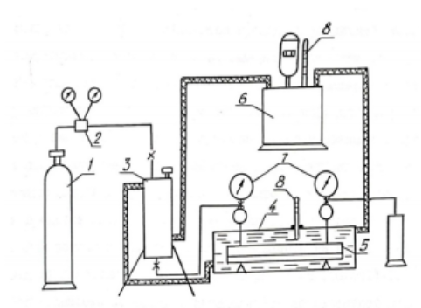


Indian Journal of Science and Technology
DOI: 10.17485/IJST/v16i47.2691
Year: 2023, Volume: 16, Issue: 47, Pages: 4605-4611
Original Article
Fuad Veliyev1, Aida Aslanova1*
1Department of Petroleum Engineering, Baku Higher Oil School, Azerbaijan
*Corresponding Author
Email: [email protected]
Received Date:25 October 2023, Accepted Date:06 November 2023, Published Date:30 December 2023
Objectives: The rheophysical aspects of non-Newtonian behavior of water flow in thin channels are experimentally examined. The main objective of the research work is to establish the role of electrokinetic potential on the regulation of the rheophysical properties of fluid flow and by decreasing the electrokinetic potential, reducing hydraulic resistance of the system and improving the fluid flow. Method: Microchannel model with different openness value was used. To regulate the electrokinetic potential, antistatic additives were used, the optimal concentration of which was established experimentally. Based on Bingham model, rheological parameters of water flow were estimated at different micro-slit clearances, in the absence and presence of antistatic additive. Findings: It is established that nonlinear rheological effect in water flow in micro-slits is caused by the value of electrokinetic potential, by reducing of which it is possible to significantly weaken the non-Newtonian nature of the fluid. It is also determined that reduction in the electrical potential leads to a significant decrease in the yield shear stress. As a result, up to 20% increase was recorded in the fluid flow through the microcrack model by reducing the electrokinetic potential of the fluid system. Novelty: Previous works revealed that with a decrease in the gap openness in microcracks, starting from a critical size, the viscous liquid exhibits a non-Newtonian character, with the manifestation of an initial pressure gradient and flow locking. However, the main reason behind this phenomena was not fully supported yet. This work is the first scientific work that establish the crucial role of electrokinetic potential on the regulation of the rheophysical properties of fluid flow in microchannels. It is also the first work to determine the possibility of the reduction of the yield shear stress and flow locking in water flow through microchannels by controlling the electrokinetic potential of the system.
Keywords: Antistatic additives, Slit opennes, Electric double layer, Streaming potential, Microchannel
© 2023 Veliyev & Aslanova. This is an open-access article distributed under the terms of the Creative Commons Attribution License, which permits unrestricted use, distribution, and reproduction in any medium, provided the original author and source are credited. Published By Indian Society for Education and Environment (iSee)
Subscribe now for latest articles and news.